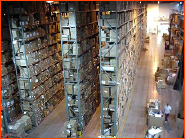A new report analyzing the potential for international RFID deployment over the next 20 years estimates that tagging will be commonplace within four years as tag prices drop significantly.
Entitled “Countdown to RFID,” the report bases its findings on more than 50 interviews with senior executives from retailers, manufacturers and technology providers in the U.K., Europe, U.S. and Japan. “It offers a unique consensus on current industry practices and provides the industry with a management tool based on real issues and actual decisions,” says Fidel Gonzalez, partner at Welsh company Insight Research, which produced the report.
The report acknowledges that the technology is not quite ready. Tags are less than completely reliable. Solutions still need to be developed to handle the huge volume of data RFID systems will create. The infrastructure offered by competing RFID vendors can be incompatible, and nations have yet to agree on unified standards, frequencies and power levels for RFID tags and readers.
Still, the authors of the report are confident that these hurdles will be overcome quickly. A more critical issue is the need for companies throughout the supply chain to find a way to divide the cost of deploying RFID systems and tagged products.
“While retailers are spearheading the deployment of RFID, one important question that remains unresolved is, Who is going to pay for this going forward?” says Gonzalez. Until this is addressed to the satisfaction of all affected parties, RFID deployments could be delayed, he says.
Nevertheless, the reports finds that as early as next year, some European retailers and suppliers will start using RFID within their joint supply chains, with tags applied to high-value items as well as cases and palettes by the end of the year. Tag prices are expected to be between 5 to 10 cents each during 2004.
By 2006, Insight forecasts that tagging will be well on its way to becoming commonplace within supply chains, including among smaller retailers and suppliers, with an expected tag price of 1 to 2 cents. Further out, in the 2008–2012 time frame, the report expects that item-level tagging will be used in conjunction with bar codes. During that period, RFID readers will be used alongside conventional bar code checkout systems in stores, with nontagged items scanned separately using a bar code reader. By this time, tags will be priced between 0.5 and 0.2 cents.
Finally from 2013 to 2023, Insight Research says it expects tagging at the item level to be widespread, virtually replacing bar coding and making the “Internet of Things,” as envisioned by the Auto-ID Center, a reality. That will mean tags will be priced at less than 0.1 cent, with more than 10 billion tags in use, according to the report.
The report is priced at £495, €720 or US$825 and can be ordered from the company’s Web site.


